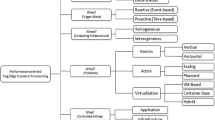Abstract
As a consequence of the exponential growth of current technology and, by nature, information digitization, there is an increasing number of final devices on the Internet of Things (IoT). To address these requirements, it is appropriate to access new capabilities of information technologies (IT) and operational technologies (OT) and have the potentialities offered by the Cloud, but from an environment close to the production plant, which implies a reduction in broadband costs and low dependence on latency. With this approach, this study presents a Fog Computing (FC) alternative implemented for object recognition through Artificial Intelligence (AI). The architecture proposed consists of deep neural networks (DNNs) processing nodes, the main Fog node for Docker-based provisioning and Kubernetes orchestration; in addition, Prometheus was used for collecting dynamic metrics, such as central processing unit (CPU), random access memory (RAM) and power absorbed, and afterward, Grafana was used for the analysis and visualization of their trends. After experimentation, the Fog architecture was obtained by balancing the workload in the two processing nodes, achieving an improvement of more than 50% in the provisioning and orchestration processing time compared to an architecture constituted by a single node.
Access this chapter
Tax calculation will be finalised at checkout
Purchases are for personal use only
Similar content being viewed by others
References
Author, F.: Article title. Journal 2(5), 99–110 (2016).
and D. V. I. A. D. D. D. A. Moskvin, “A Technique for Safely Transforming the Infrastructure of Industrial Control Systems to the Industrial Internet of Things,” Autom. Control Comput. Sci., vol. 54, no. 8, pp. 841–849, 2020, doi: https://doi.org/10.3103/S0146411620080106.
V. R. Kebande, “Industrial internet of things (IIoT) forensics: The forgotten concept in the race towards industry 4.0,” Forensic Sci. Int. Reports, vol. 5, p. 100257, 2022, doi: https://doi.org/10.1016/j.fsir.2022.100257.
J. Mustafa, K. Sandström, N. Ericsson, and L. Rizvanovic, “Analyzing availability and QoS of service-oriented cloud for industrial IoT applications,” IEEE Int. Conf. Emerg. Technol. Fact. Autom. ETFA, vol. 2019-Septe, pp. 1403–1406, 2019, doi: https://doi.org/10.1109/ETFA.2019.8869274.
H. F. Atlam, R. J. Walters, y G. B. Wills, «Fog Computing and the Internet of Things: A Review», Big Data Cogn. Comput., vol. 2, n.o 2, Art. n.o 2, jun. 2018, doi: https://doi.org/10.3390/bdcc2020010.
R. Mahmud, K. Ramamohanarao, and R. Buyya, “Edge affinity-based management of applications in fog computing environments,” UCC 2019 – Proc. 12th IEEE/ACM Int. Conf. Util. Cloud Comput., pp. 61–70, 2019, doi: https://doi.org/10.1145/3344341.3368795.
L. Civolani, G. Pierre, and P. Bellavista, “FogDocker: Start container now, fetch image later,” UCC 2019 - Proc. 12th IEEE/ACM Int. Conf. Util. Cloud Comput., pp. 51–59, 2019, doi: https://doi.org/10.1145/3344341.3368811.
S. Iram, T. Fernando, and R. Hill, Connecting to smart cities : analyzing energy times series to visualize monthly electricity peak load in residential buildings, vol. 1, no. 880. Springer International Publishing, 2018.
C. Mouradian et al., “An IoT Platform-as-a-Service for NFV-Based Hybrid Cloud/Fog Systems,” IEEE Internet Things J., vol. 7, no. 7, pp. 6102–6115, 2020, doi: https://doi.org/10.1109/JIOT.2020.2968235.
L. Toka, “Ultra-Reliable and Low-Latency Computing in the Edge with Kubernetes,” J. Grid Comput., vol. 19, no. 3, 2021, doi: https://doi.org/10.1007/s10723-021-09573-z.
B. Donassolo, I. Fajjari, A. Legrand, and P. Mertikopoulos, “Demo: Fog Based Framework for IoT Service Orchestration,” 2019 16th IEEE Annu. Consum. Commun. Netw. Conf. CCNC 2019, 2019, doi: https://doi.org/10.1109/CCNC.2019.8651852.
M. Lorenz, D. Küpper, M. Rüßmann, A. Heidemann, and A. Bause, “Time to Accelerate in the Race,” The Boston Consulting Group, Boston, 2016.
B. Tang et al., «Incorporating Intelligence in Fog Computing for Big Data Analysis in Smart Cities», IEEE Trans. Ind. Inform., vol. 13, n.o 5, pp. 2140–2150, oct. 2017, doi: https://doi.org/10.1109/TII.2017.2679740.
Franklin, Dustin y Linderoth, Magnus, Deploying Deep Learning. 2022. Accedido: 27 de enero de 2022. [En línea]. Disponible en: https://github.com/dusty-nv/jetson-inference/blob/6bf94f753c727ea50f256fdec5fbe74bee540773/docs/aux-streaming.md
Ramalingam, B.; Elara Mohan, R.; Balakrishnan, S.; Elangovan, K.; Félix Gómez, B.; Pathmakumar, T.; Devarassu, M.; Mohan Rayaguru, M.; Baskar, C. sTetro-Deep Learning Powered Staircase Cleaning and Maintenance Reconfigurable Robot. Sensors 2021, 21, 6279. https://doi.org/10.3390/s21186279
«NVIDIA Jetson Xavier NX for Embedded & Edge Systems», NVIDIA. https://www.nvidia.com/es-la/autonomous-machines/embedded-systems/jetson-xavier-nx/ (accedido 2 de febrero de 2022).
NVIDIA Developer, «NVIDIA TensorRT», NVIDIA Developer, 5 de abril de 2016. https://developer.nvidia.com/tensorrt (accedido 27 de enero de 2022).
«What is a Container? | App Containerization | Docker». https://www.docker.com/resources/what-container (accedido 12 de febrero de 2022).
«MicroK8s vs k3s vs Minikube | MicroK8s», microk8s.io. http://microk8s.io (accedido 12 de febrero de 2022).
D. Santa Rendón, «Aplicación de una arquitectura basada en Service Mesh para una plataforma cognitiva utilizando Kubernetes e Istio», 2021, Accedido: 27 de enero de 2022. [En línea]. Disponible en: http://bibliotecadigital.udea.edu.co/handle/10495/20037
«Grafana basics», Grafana Labs. https://grafana.com/docs/grafana/latest/basics/ (accedido 12 de febrero de 2022).
B. Donassolo, I. Fajjari, A. Legrand, y P. Mertikopoulos, «Demo: Fog Based Framework for IoT Service Orchestration», en 2019 16th IEEE Annual Consumer Communications & Networking Conference (CCNC), Las Vegas, NV, USA, ene. 2019, pp. 1–2. doi: https://doi.org/10.1109/CCNC.2019.8651852.
Author information
Authors and Affiliations
Corresponding author
Editor information
Editors and Affiliations
Rights and permissions
Copyright information
© 2024 The Author(s), under exclusive license to Springer Nature Switzerland AG
About this paper
Cite this paper
Simbaña, P., Soto, A., Oñate, W., Caiza, G. (2024). Provisioning Deep Learning Inference on a Fog Computing Architecture. In: Meng, L. (eds) International Conference on Cloud Computing and Computer Networks. CCCN 2023. Signals and Communication Technology. Springer, Cham. https://doi.org/10.1007/978-3-031-47100-1_6
Download citation
DOI: https://doi.org/10.1007/978-3-031-47100-1_6
Published:
Publisher Name: Springer, Cham
Print ISBN: 978-3-031-47099-8
Online ISBN: 978-3-031-47100-1
eBook Packages: EngineeringEngineering (R0)




